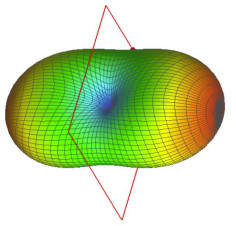 I have been doing POTA activations for a few years now. its great fun and encourages us amateur radio operators to develop off-grid communications systems. If you haven’t heard of POTA, its a somewhat new thing in the world of ham radio. The best thing you can do is go to their website to get the whole scoop. Its parksontheair.com.
I have been doing POTA activations for a few years now. its great fun and encourages us amateur radio operators to develop off-grid communications systems. If you haven’t heard of POTA, its a somewhat new thing in the world of ham radio. The best thing you can do is go to their website to get the whole scoop. Its parksontheair.com.
One band that seems to be forgotten, not only in Ham Radio in general, but also in the POTA world. Sadly, the 6 Meter band is open sporadically, but few people really check on it. There is however a nice website, pskreporter.info that monitors various digital modes on all of the ham bands. Whenever I go out on a POTA activation I check the activity on the 6 meter band for activity, especially in the spring through mid-summer.
One thing though, since this 6 Meter Full Wave Loop doesn’t have high gain and a typical POTA activation often times doesn’t have a high location, that means that POTA on 6 Meters is much more of a challenge than the more commonly used bands. So when I go to pskreporter.info, I make sure the map shows a lot of 6 meter signals across the United States. If so, odds are pretty good that I will snag at least a couple of QSO’s on 6 Meters. One thing I have been doing on 6 meters is the FT8 mode. This is because the FT8 people are by far the most active on the 6 meter band. One time I got all 10 QSO’s needed to activate a park on 6 meters alone using FT8.
Here is a photo from the first time I used my new 6 Meter full wave loop . You can’t see the wires of the loop, but you can see the orange spreaders for the sides of the loop. I made ten 6 meter QSO’s that day on FT8 – I was pleased.

To build this portable 6 Meter loop, you first need to know how long to make the loop. The formula for calculating how long to make the loop is as follows:
Total Length (in feet) = 1005 / Frequency (in mHz)
In my case, I was mainly interested in the SSB and the FT8 portion of the 6 Meter band. So for my calculations I used 50.2 Mhz which gives me 20.2 feet. Or 5.05 feet per side. Since its always easier to make the wire long and trim, I made my wire 20.5 feet. As it turned out for me, that was too short and I had to add wire anyway. As usual, your mileage may vary.
Thanks for sharing Mike- Question on the length of 75 Ohm Coax. Did you change out the connectors for PL-259s? I am thinking this is tomorrows project! Also what length 75 Ohm was used? Thanks again.
Mike
W1SRR
You’re welcome – Glad to see people getting on 6 meters. Concerning the coax, I did not use coax for cable TV. What you need to use is RG-59 coax. If your coax has the typical connectors for CATV it is the wrong coax. In my case, I happened to have it around which did not have connectors on it. So yes, I put my own connectors on.
As far as the length, that depends on the coax velocity factor. This depends on what materials the coax is made of. You can find the velocity factor on the specifications page of the coax you have. Typically it is either 0.66 or 0.78. Once you have determined the velocity factor, the length you need is at the bottom of page 2 of this post.
Hope this helps!
— Mike
This is great, Mike! Just what I’m looking for. I’m curious how you went about tuning this. Do you start with just the loop and adjust for lowest SWR, then add the matching section and repeat? Or some other procedure?
Thanks!
Rick WØYGH
Thanks!
When tuning the antenna, you tune it while the matching section is already installed on the antenna.
For the matching section, I just cut it to length per the table in the article for whatever the velocity factor is for the coax. I then adjusted the length of the loop to get a low SWR.
As far as tuning, I have a MFJ Antenna Analyzer. If you have a SWR bridge that will work too. Hope this helps!
— Mike WB8ERJ
Thanks, Mike!
I found a chart of velocity factors of Belden RG-59. If the dielectric is white foam (Belden 8241F), the VF is 78. If the dielectric is polyethylene (milky white, semi-transparent) (Belden 8241) the VF is 66.
I’ll just cut the matching section to your numbers and go from there.
Rick WØYGH
Thanks Rick, good info!
I will add this to the post
— Mike WB8ERJ